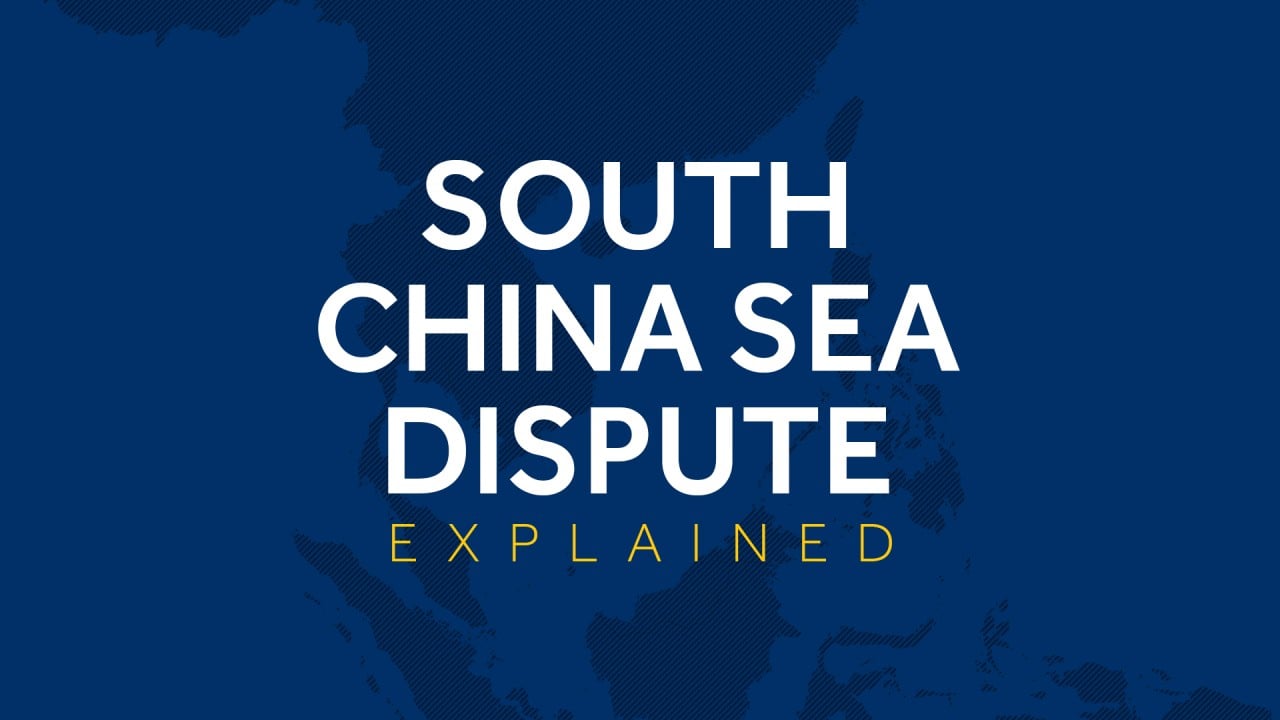
Japan weighs in on South China Sea dispute, adding to pressure on Beijing
- Permanent mission to UN sends note saying China’s territorial baselines on some islands and reefs fail to satisfy conditions in United Nations convention
- It also accuses China of restricting freedom of navigation and overflight
In a note verbale – a type of diplomatic communication – sent on Tuesday, Japan’s permanent mission to the United Nations said China’s “drawing of territorial sea baselines … on relevant islands and reefs in the South China Sea” failed to satisfy conditions set out in the UN Convention on the Law of the Sea.
It also accused China of restricting freedom of navigation and overflight in the South China Sea.
“China has not accepted this [2016] award, and has asserted that it has ‘sovereignty’ in sea and airspace surrounding and above those maritime features found to be low-tide elevations,” Japan said in the note addressing UN secretary general Antonio Guterres.
“As a matter of fact, China protests the overflight of Japanese aircraft in the surrounding Mischief Reef and attempts to restrict the freedom of overflight in the South China Sea,” it said.

02:32
Washington’s hardened position on Beijing’s claims in South China Sea heightens US-China tensions
China’s two-pronged strategy to grind Japan down over disputed islands
Chen Xiangmiao, an associate research fellow at the National Institute for South China Sea Studies in Hainan, said the timing of the note was significant.
“This could be a way for Japan to raise the stakes in its [East China Sea] negotiations with China,” Chen said. “As Japan and the US are close allies, a hardened stance by Japan on the South China Sea will be welcomed by the US, whether it’s the Donald Trump administration or the Joe Biden administration.”

Japan’s diplomatic note follows similar submissions urging Beijing to comply with the landmark 2016 ruling from the US, Australia, Britain, France and Germany, as well as rival claimants Indonesia, Vietnam and the Philippines, the nation that took the case to The Hague.
“The addition of Japan to the international legal coalition adds weight to the 2016 tribunal ruling,” said Yoichiro Sato, a professor of Indo-Pacific security with Ritsumeikan Asia-Pacific University in Japan.
South China Sea: the dispute that could start a military conflict
But unlike the US and its allies – which rejected what Beijing calls its historic rights to the South China Sea – Japan’s diplomatic note mentioned China’s obstruction of freedom of navigation and overflight only around submerged features and low-tide elevations that are not deemed to have territorial waters. Observers said that could have been an attempt to avoid pushing China too far.
Japan also stopped short of going into detail about these features, making a specific reference only to Mischief Reef, Sato noted.
Part of the disputed Spratly Islands, China has occupied Mischief Reef and has a military base there after turning it into an artificial island. The reef is also claimed by the Philippines and Vietnam.

03:23
The South China Sea dispute explained
Sato said the dispute with Beijing in the East China Sea may complicate Tokyo’s position in the South China Sea.
“Japan’s reluctance is most focused on a fear that its involvement in the South China Sea may result in China’s retaliation in the East China Sea over the Senkaku Islands,” Sato said.
He added that the presence of Chinese coastguard vessels near the Senkakus “has convinced Japan that the growing Chinese assertiveness in both seas has common roots in nationalism and expansionist intent”.
However, Chen said Beijing was unlikely to change its position on the South China Sea despite the increasing international pressure.

